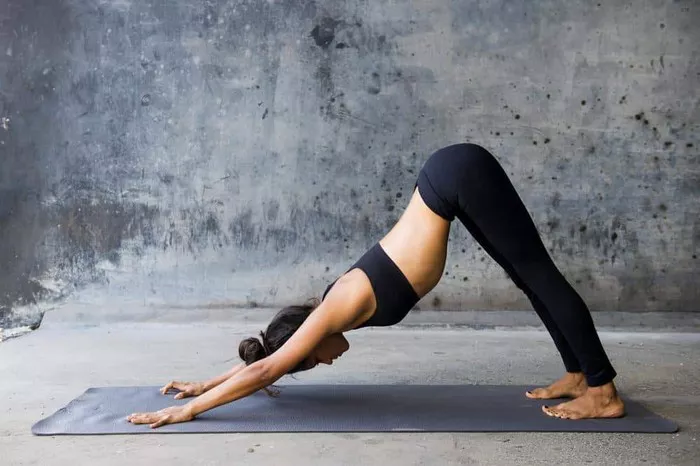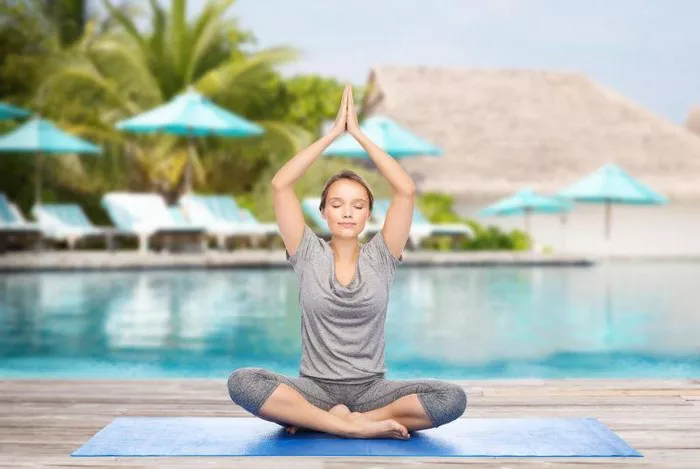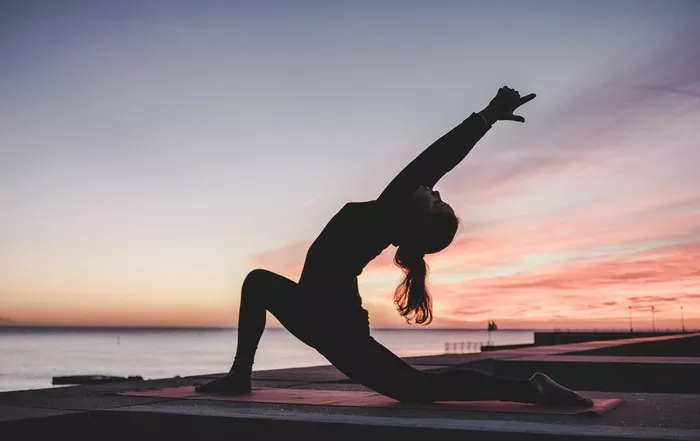During menstruation, the body undergoes a series of hormonal and physiological changes. Estrogen and progesterone levels drop significantly, leading to a decrease in muscle strength and flexibility. The uterine muscles contract to shed the endometrial lining, often causing cramping, discomfort, and fatigue. These physiological shifts directly impact how the body responds to physical activity, including Ashtanga yoga.
Hormonal Fluctuations and Their Impact
The decline in estrogen and progesterone affects not only muscle tone but also joint stability. With reduced hormonal support, joints may become more prone to injury. Additionally, the drop in these hormones can lead to mood swings and a decrease in overall energy levels. This means that the body may not be able to handle the intense physical demands of Ashtanga in the same way as during other times of the month. It’s important to recognize these hormonal influences to make informed decisions about practicing yoga during menstruation.
Uterine Activity and Blood Flow
The contraction of the uterine muscles during menstruation is a natural process, but certain yoga postures can either support or disrupt this. Inverted postures, for example, may interfere with the natural flow of menstrual blood. On the other hand, gentle stretching and relaxation postures can help relieve uterine cramps. Understanding how different postures interact with uterine activity is crucial for a safe and beneficial Ashtanga practice during this time.
The Ashtanga Practice: What Stays and What Goes
While Ashtanga yoga is a dynamic and structured practice, not all aspects of it are suitable for menstruation. It’s essential to distinguish between the components that can be continued with modifications and those that should be avoided altogether.
Modifying the Vinyasa Flow
The continuous vinyasa flow in Ashtanga, which involves rapid transitions between postures, may be too strenuous during menstruation. Instead, practitioners can slow down the flow, taking more time to move between postures and focusing on the breath.
Omitting the more intense vinyasas, such as the full – jump through and jump back sequences, can also reduce the physical load on the body. This modified vinyasa approach allows for a more gentle practice that still maintains the essence of Ashtanga’s connection between movement and breath.
Posture Prohibitions
Certain postures in Ashtanga yoga should be avoided during menstruation. Inverted postures, like headstands (sirsasana) and shoulder stands (sarvangasana), can disrupt the natural flow of menstrual blood and potentially lead to backflow, which may cause discomfort or health issues. Twisting postures that put excessive pressure on the abdomen, such as marichyasana variations, should also be avoided as they can exacerbate uterine cramps. By being aware of these prohibited postures, practitioners can prevent unnecessary discomfort and potential harm.
Gentle Alternatives: Adapting Ashtanga for Menstrual Comfort
There are several ways to adapt Ashtanga yoga to accommodate the body’s needs during menstruation, focusing on gentle movement, relaxation, and stress relief.
Restorative Ashtanga Elements
Incorporating restorative postures into the Ashtanga practice can be highly beneficial. Poses like supported bridge pose (setu bandhasana) with a bolster under the hips, or reclining bound angle pose (supta baddha konasana) with props for support, can help relax the body and relieve tension. These restorative postures not only soothe the physical discomfort associated with menstruation but also calm the mind, reducing stress and anxiety.
Pranayama and Meditation Focus
During menstruation, placing more emphasis on pranayama (breathing techniques) and meditation within the Ashtanga practice can be extremely helpful. Ujjayi pranayama, with its slow, deep breaths, can help relax the body and reduce stress.
Meditation, whether it’s a simple mindfulness practice or a more focused concentration on the breath, can bring a sense of calm and inner peace. This shift towards pranayama and meditation allows practitioners to still engage in the spiritual and mental aspects of Ashtanga while giving the body the rest it needs.
Listening to Your Body: The Key to a Safe Practice
Every woman’s experience during menstruation is unique, and it’s crucial to listen to the body’s signals when practicing Ashtanga yoga during this time.
Recognizing Fatigue and Discomfort
Pay close attention to feelings of fatigue and discomfort. If a particular posture or movement causes pain or excessive tiredness, it’s a clear sign to stop. The body’s fatigue during menstruation is a natural response to the physiological changes, and pushing through it can lead to further exhaustion and potential injury. By respecting these signs, practitioners can ensure a safe and comfortable practice.
Adjusting Intensity Based on Symptoms
Symptoms during menstruation can vary from day to day. Some days may be more comfortable, while others may bring more severe cramping and fatigue. Based on these daily fluctuations, it’s important to adjust the intensity of the Ashtanga practice. On days with milder symptoms, a more gentle vinyasa flow may be possible, while on more difficult days, focusing solely on restorative postures and breathing exercises may be the best option.
Preparing for Practice: Essential Precautions
Taking certain precautions before starting an Ashtanga yoga practice during menstruation can enhance safety and comfort.
Hydration and Nutrition
Staying well – hydrated is crucial during menstruation, as the body loses fluids. Drink plenty of water, herbal teas, and electrolyte – rich beverages. Additionally, a balanced diet rich in nutrients can help support the body’s needs. Foods high in iron, such as leafy greens and lean meats, can replenish the iron lost during menstruation. Avoiding processed foods, caffeine, and excessive sugar can also reduce bloating and discomfort, making the yoga practice more pleasant.
Appropriate Attire
Wearing comfortable, breathable clothing is essential for Ashtanga yoga during menstruation. Opt for loose – fitting yoga pants or shorts that don’t constrict the abdomen. Using menstrual products that are comfortable and reliable, such as menstrual cups or high – quality pads, can also enhance comfort during practice. The right attire and menstrual products allow for freedom of movement without any distractions.
Conclusion
It is possible to practice Ashtanga yoga during menstruation, but it requires a significant degree of adaptation. By understanding the physiological changes that occur during this time, modifying the practice, listening to the body, taking precautions, and focusing on gentle alternatives, practitioners can still enjoy the benefits of Ashtanga while respecting their body’s needs. The key is to approach the practice with awareness, flexibility, and self – compassion, ensuring that it remains a source of well – being rather than a source of stress or discomfort.

















